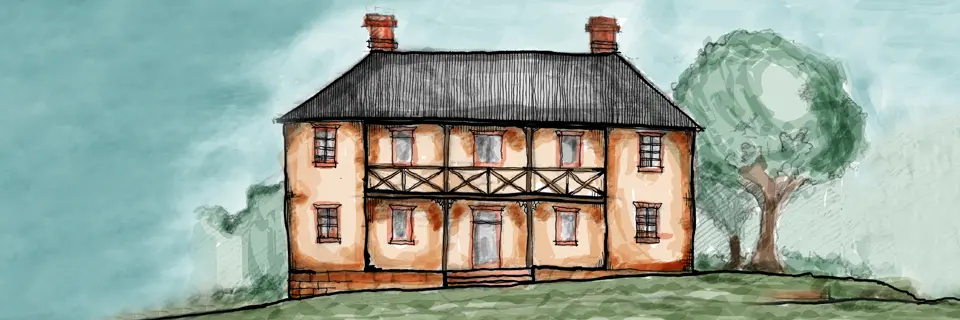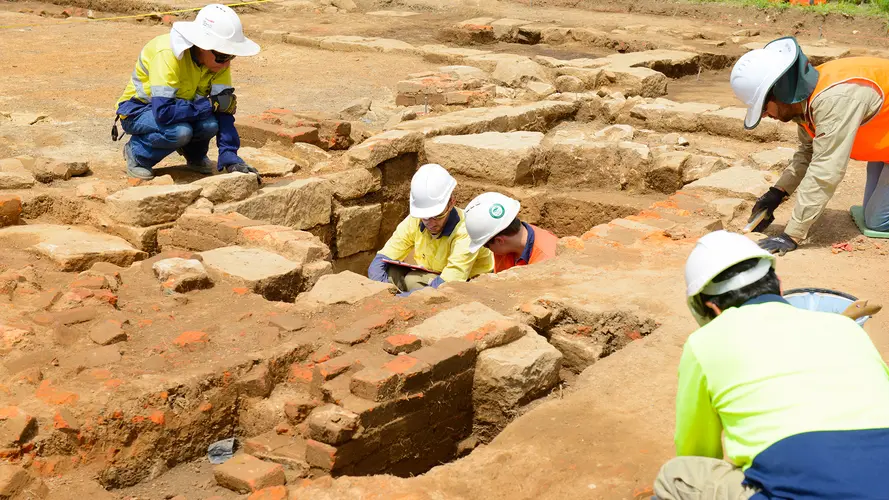History uncovered on NWRL's journey to the future
12.03.2014


Works have uncovered the ruins of an early 19th century Sydney inn – but mystery still surrounds what happened to the White Hart Inn at Kellyville.
Its foundations were uncovered by archaeologists near the intersection of Old Windsor and Windsor roads at Kellyville during heritage work for the skytrain section of the North West Rail Link.
The foundations were found about 1km away from a nearby road possibly named after the inn – White Hart Drive at Rouse Hill – and have been used by archaeologists to sketch what the inn could have looked like.
Built in the late 1820s, the inn is believed to have been demolished around the turn of the 20th century – but no one is yet sure why.
Archaeological experts have carefully excavated the site and catalogued finds including:
- A toothpaste canister with Queen Victoria's image on it
- Medicine bottles
- A doll’s leg and
- Coins that are almost 200 years old.
This important site will now be protected, with construction of the North West Rail Link to be modified as a result.
One of the pylons for the skytrain landed in the middle of the White Hart Inn site, so the North West Rail Link project team is now working with contractor Impregilo- Salini to adjust the pylon position so that the site can be conserved.
The White Hart Inn is steeped in historical intrigue, with few documents mentioning it by name and no sketches of it yet uncovered – despite archaeologists and historians long suspecting the area near the intersection of Old Windsor and Windsor roads at Kellyville was the site of an inn.
The White Hart Inn was a competitor to the Royal Oak Inn.
While the Royal Oak survives to this day and is known as the Mean Fiddler, the last known mention of the White Hart is from 1881 when it was put up for auction.
“We don’t know what happened to it after 1881, how it was destroyed and why it didn’t survive as an inn – the clues could be here, it’s a matter of finding them,” said excavation co-director Pamela Kottaras.
“The White Hart could have been a refuge from – or even for – bushrangers, with bushranging a part of life in NSW from the early days of settlement until the late 19th century.
“Until we find evidence of bushrangers at the White Hart Inn, we can only speculate that its patrons rubbed shoulders with, or indeed were, bushrangers and other unsavoury characters.”